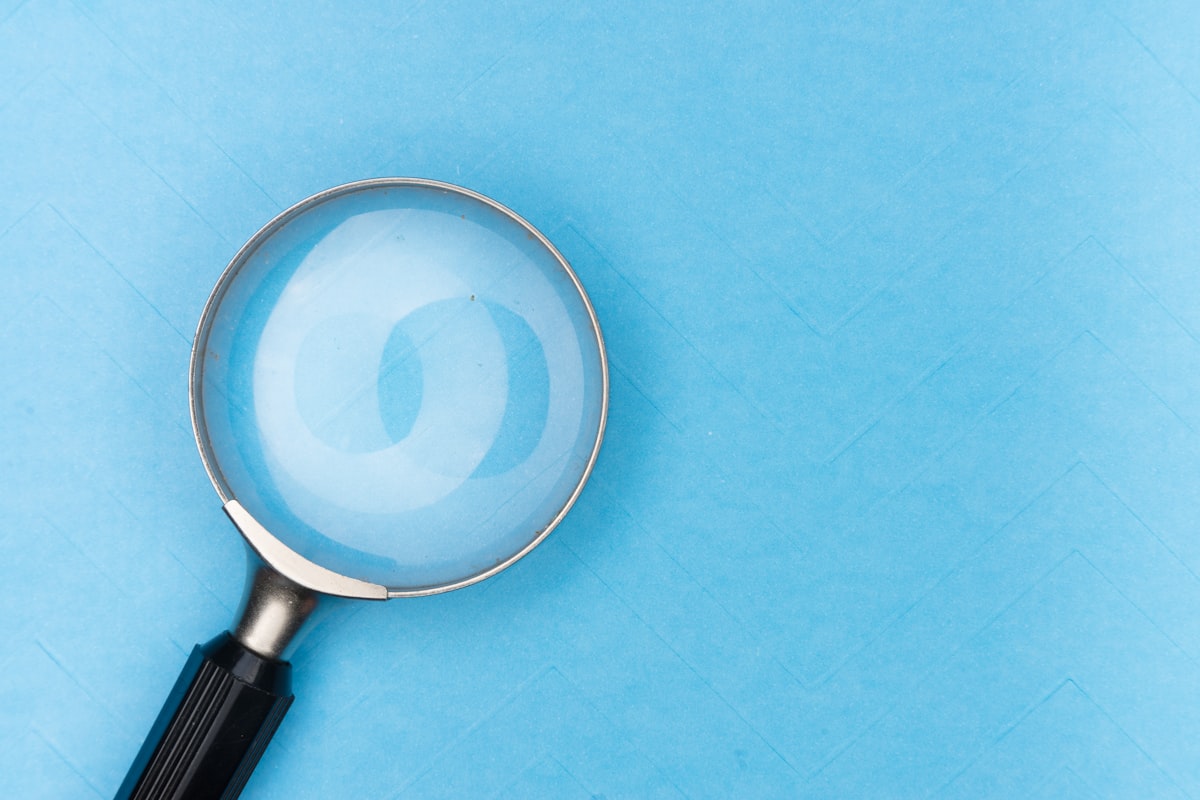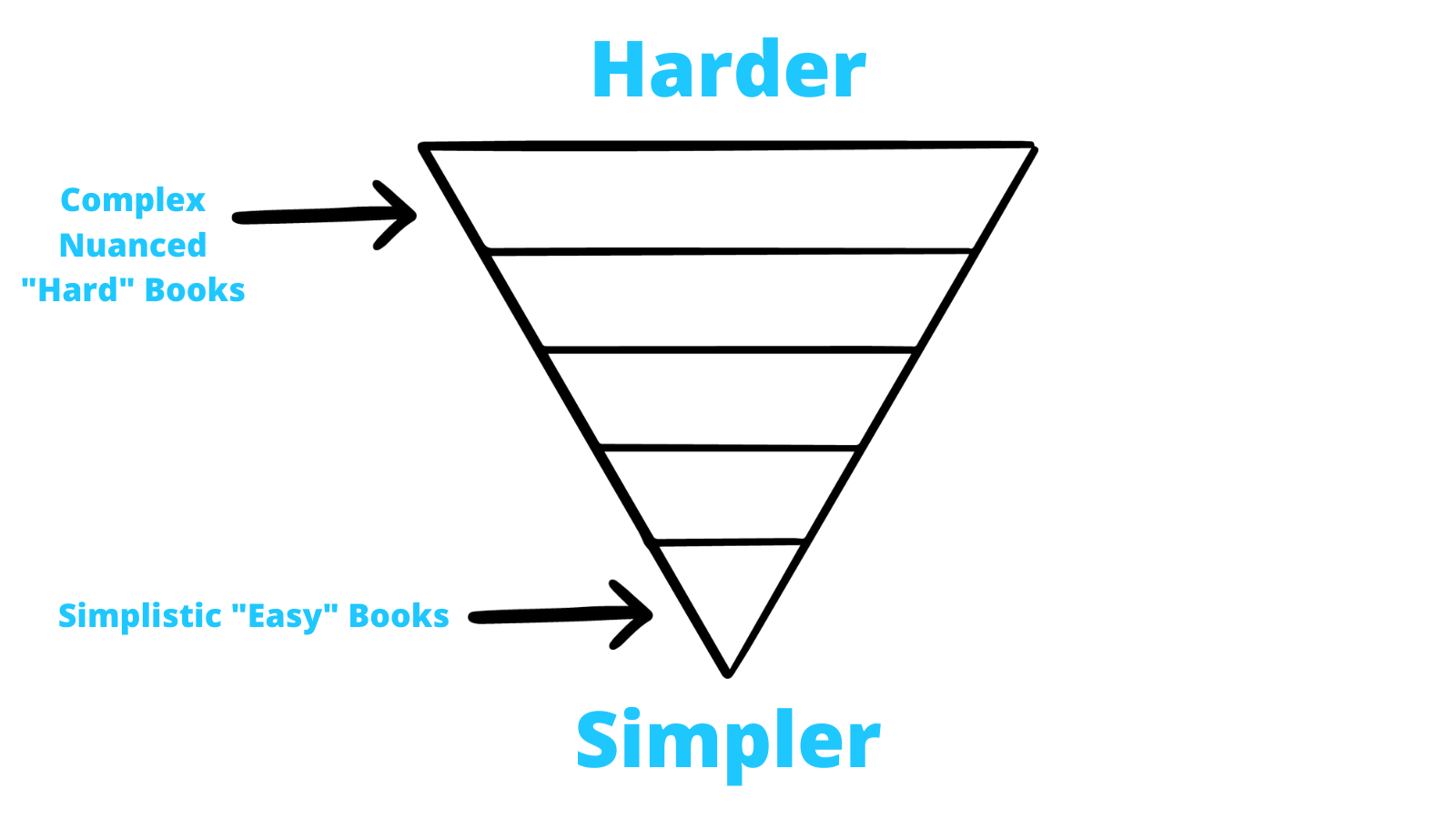🔎How I Choose The Right Books to Read

I am often asked which books are the best to read. The issue is the books I like best aren’t necessarily the best for you. I like them best because of my unique perspective.
Instead of describing what the best books are, I will take you through my process of choosing which books to read. This way you can find the best books for you.
First I will show you how I explore topics through the Inverted Reading Pyramid. Then I will describe how I narrow down the books I choose inside the pyramid.
📐The Inverted Reading Pyramid
I think the right way to read books is to think of them like an inverted pyramid.

At the bottom are your beginner books like popular science, self-improvement, YA fantasy, etc. These are great entry points into a topic because they are generally easy to understand and actionable. The problem however, is books on the bottom layer at best simplification, and at worst outright false.
As you go up the layers, the books become increasingly smarter and more nuanced, but paradoxically, less helpful. The authors start to argue over minute definitions and make points nobody in the real world really cares about. You want a yes-or-no answer but instead they spend hundred of pages to say, “maybe?”
I suggest you choose books by traveling up the pyramid. If you are first delving into a subject then a good rough progression would be popular beginner books, specialist books written for mass audiences, specialist books written for specialists, and finally primary research, journal articles, and expert commentary.
Does this pyramid work for fiction, novels, sci-fi, and fantasy? Abslutely! The exact progression won’t be the same but your philosophy while choosing should be.
For example, if you are first delving into novels I don’t recommend you start with something like Jame Joyce's Ulysses. Many novels often require a deep knowledge background into other works to understand than properly. Instead, start with books you know don’t require having read many other texts to understand.
At a broad level, this is how I choose what books to read. Now let’s get more specific. Let’s go through seven guidelines (in no particular order) I use for narrowing down on books inside the pyramid.
🤿Engage in a Deep Learning Project
Deep learning projects typically span multiple books and involve all parts of the reading pyramid. I undergo a deep learning project anytime I want to delve deep into a certain topic. They often also include real world applications outside of reading. Some deep learning projects I have done in the past are communication history, personal knowledge management, and gamification.
After choosing a topic, I create a bibliography out of the books, articles, and people I can talk to to learn more about the subject.
Then I read scope my bibliography at a broad level. I read book summaries, read introductions, skim chapters, etc. This lets me cut down my massive list to a more manageable size. Only then do I begin to read more in depth using highlighting, annotating, and my book summarization process.
🔨Find Your Problems
Sometimes my problem isn’t finding books on a topic but finding the topic I’m interested in itself. I usually solve this by asking myself what problems I’m facing in life. You can do the same.
What issues are you struggling with most? Are you having difficulty eating healthily? Are you finding it hard to kickstart your business? Are you frustrated with your ability to focus?
This has the added benefit of giving you a natural filter to narrow down your bibliography. While scoping out books you can quickly address if it addresses one of your pain points. If not, get rid of it.
📃Use Your TBR List and Recommendations
I have a To Be Read List (TBR) of my own and others’ book recommendations. I write these down in apple notes along with a brief description of what it’s about and who recommended it so I can thank them in the future.
Sometimes I refer to this when looking for new books to read. But I always remember books are subjective. Everyone resonates with a book differently based on their unique perspective. Just because someone else liked a book doesn't mean I will.
📝Use Summaries
Summaries are like restaurant menus. Menus indicate what you can get and often allude to the restaurant's quality before you eat. Similarly, summaries indicate the main points of a book and can also prime you for understanding if you read it more in depth in the future.
I often use the book summary app Blinkist (which I have an affiliate link for in the description) for my book summaries. But I also love reading book summaries from independent bloggers. They often sprinkle much more of their own opinions than corporations making for a more interesting read.
Sometimes I will use audible and podcasts to scout out books as well.
I can listen to things much faster than I read, often at 2x to 2.5x speed, significantly shortening the time cost to reading a bad book. If I want to read more in depth, I will buy it physically or on an e-reader for a more analytical read.
📖Reread
“You should be extending your stay among writers whose genius is unquestionable, deriving constant nourishment from them if you wish to gain anything from your reading that will find a lasting place in your mind.” - Seneca
Sometimes the matter is not choosing new books but re-reading old ones. The best books can be read many times over. This is because you are a different person every time you pick them up.
I read Brandon Sanderson’s Stormlight Archives series once a year. I read Marcus Aurelius's Meditations every year as well. I’m always astounded at how differently they resonate with me each time.
🥣Blend a Bizzare Bowl
"The task is not so much to see what no one has yet seen, but to think what nobody yet has thought about that which everybody sees.” - Arthur Schopenhauer
Insights come from the weird juxtaposition of ideas.
I once read a book on Stoicism while reading about how to create an effective business. These two topics have seemingly nothing to do with each other. But when they mixed they spawned interesting insights and ideas.
I call this act, blending a bizarre bowl. It’s creating a weird combination of books (and other information) nobody else has read. By reading this way you create your own Infinite Library as these books interact with your unique perspective.
⌚Trust The Lindy Effect
The Lindy Effect states the future life expectancy of non-perishable things like books is proportional to their current age. I learned about this effect in Nassim Teleb’s Antifragile in which he states, “If a book has been in print for forty years, I can expect it to be in print for another forty years.”
Because of this, I generally favor older knowledge over new. Old knowledge has stood the test of time. The less important information has withered away leaving the true nuggets of insight. New knowledge, however, like 99% of the news often trades urgency for importance to get people’s attention.
I will admit, this isn’t always the case. Many old books are wordy and verbose, making them annoying to read. That’s okay. Remember, these are guidelines. Most of my favorite books were written 5 - 80 years ago.
😍Learn to Love to Read:
Choosing the right books to read is an art. It takes time and reflection to hone down on your interests.
If you disregard each of these guidelines, at least remember one thing: the best books to read are the ones you are excited about reading all the time.
Having a reading habit is much better than no reading habit. And if reading manga every single day is what keeps you reading, why stop?
But choosing what to read is only one part of an effective reading habit. To get the most our of your books, you have to learn to read more actively as well.
Thanks to Astrid Helfant for the conversations which helped from this post.
